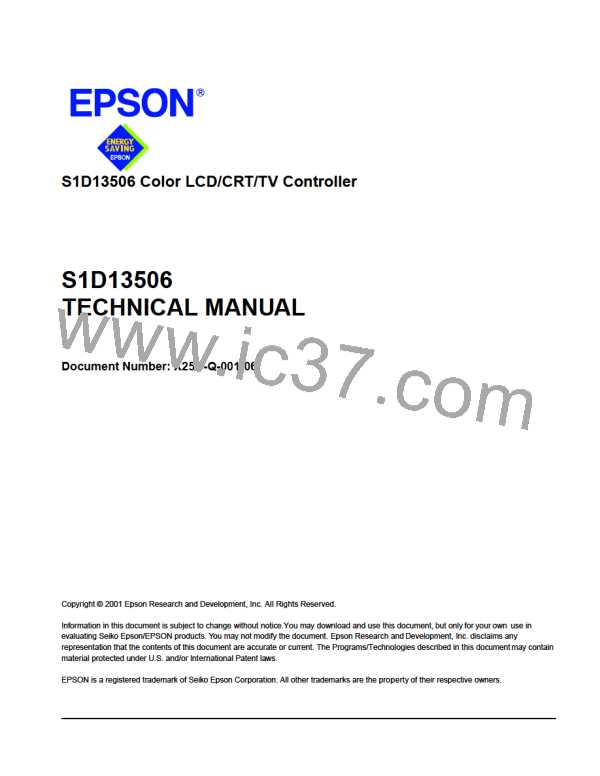Epson Research and Development
Page 5
Vancouver Design Center
/read
after drawing the image, continually reads from the screen
(for testing purposes).
/s
displays a vertical stripe pattern.
/write
continually writes to one word of offscreen memory (for
testing purposes only).
/?
displays the help screen.
Note
Pressing the Esc key will exit the program.
Display Surfaces
A surface is a block of memory assigned to one or more physical display devices.
13506SHOW provides 7 display surfaces (0-6) which cover the possible combinations of
display types. Table 1:, “Display Surfaces” lists the predefined display surfaces that may
be selected.
Table 1: Display Surfaces
Display
Display
Display Surfaces
(ds=)
Device(s) using Device(s) using
Memory Block 0 Memory Block 1
0
1
2
3
4
5
6
LCD
CRT
TV
LCD & CRT
LCD & TV
LCD
LCD
CRT
TV
Display surfaces 0 through 2 each display data from a single memory block to an individual
display device (LCD, CRT, or TV).
Display surfaces 3 and 4 output to two separate display devices, but generate the output
from the same memory block. This may be useful when the same image is to be displayed
on both display devices. It also reduces the total amount of display memory required.
Display surfaces 5 and 6 output to two separate devices from different memory blocks. This
allows two completely different images to be displayed at the same time. When using
display surfaces 5 or 6, some combinations of display modes with a high resolution and/or
high color depth may not be supported within a 2MB display buffer.
13506SHOW Demonstration Program
Issue Date: 01/02/06
S1D13506
X25B-B-002-03

 EPSON [ EPSON COMPANY ]
EPSON [ EPSON COMPANY ]